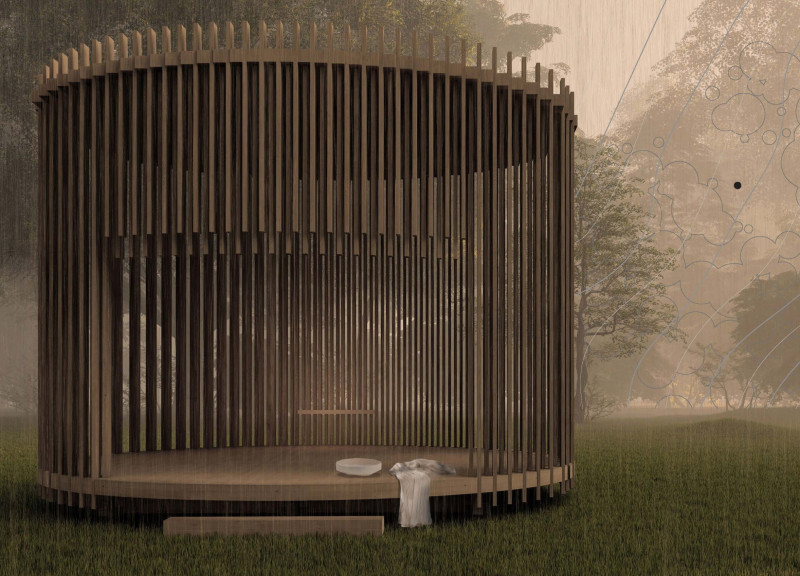5 key facts about this project
The Refuge is located in a peaceful wooded area, designed as a place for healing and reflection. It allows individuals to connect with nature while fostering a sense of tranquility. The design emphasizes the spiritual significance of the site, creating spaces that encourage introspection and self-discovery. The overall concept is rooted in the idea of genius loci, focusing on the unique character of the environment.
Site Context and Concept
The Refuge is integrated thoughtfully into its natural surroundings. Careful attention has been paid to how the structure interacts with the landscape. By separating the building from the woods, it invites visitors to experience a journey as they approach. This separation helps cultivate an atmosphere suited for contemplation and personal reflection.
Spatial Organization
The layout of The Refuge features distinct areas for various activities such as meditation and reflection. Each space is designed to frame views that inspire mindfulness. Vertical wooden elements are used strategically throughout the building to create a sense of rhythm. This balance between open areas and sheltered spots enables users to feel connected to the outside while enjoying the comfort of indoor spaces.
Materiality and Sustainability
Sustainability is a key principle in the design of The Refuge. Locally sourced wood is selected as the main construction material, reinforcing its ties to the environment. Compact concrete footings are employed to minimize the structure's footprint, ensuring environmental integrity. Prefabricated cross-laminated timber (CLT) is used for the roofing and flooring, allowing for efficient assembly with reduced machinery usage.
Design Detail
The vertical wooden elements serve both an aesthetic and functional purpose. Their arrangement creates a visual rhythm that connects the structure to the surrounding landscape. These elements frame views that invite visitors to pause and reflect. As natural light filters through, it produces dynamic patterns in the interior spaces, enhancing the overall experience of The Refuge as a tranquil setting for meditation and healing.






















































